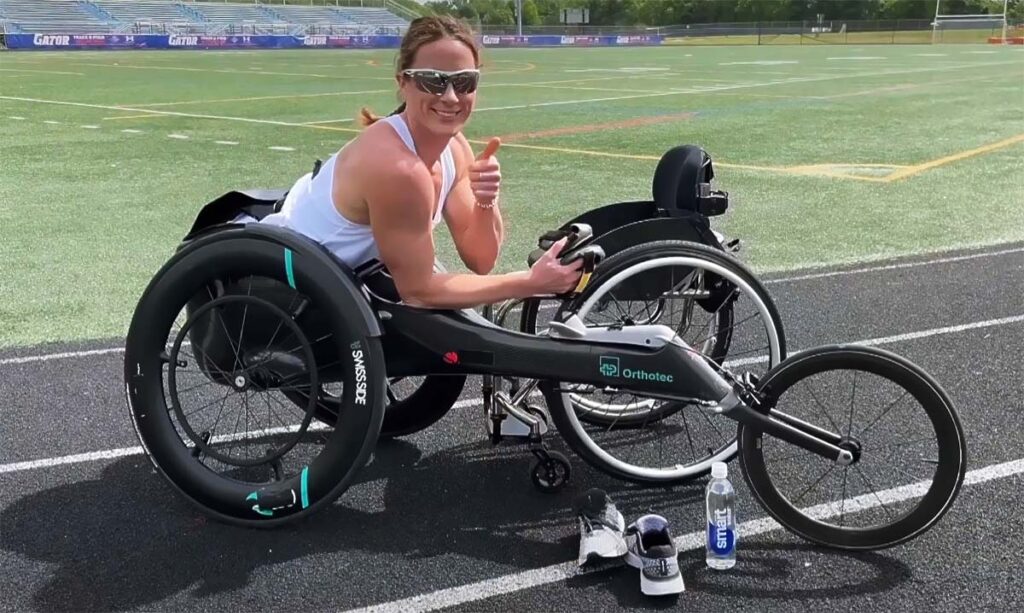news 2024
CRP USA Elevates Wheelchair Racing Gear for Paralympics Champion Tatyana McFadden
July 10, 2024

Wheelchair racing demands gloves that deliver exceptional performance due to the high friction from continuous hand-wheel contact. Traditional options often fell short for athletes like Tatyana McFadden. Before discovering CRP USA's solution, Tatyana used standard mould kits, but the quality was lacking. Traditional manufacturing methods couldn't produce gloves that withstood the intense stress of wheelchair racing while providing the necessary precision and comfort.
Reflecting on earlier experiences, Tatyana recalls, "My first racing gloves were made of heavy-duty fabric with rubber padding, which allowed me to feel every impact against the hand ring." By the 2008 Paralympic Games, she and her team began crafting hard gloves using plastic beads melted in boiling water, molded to fit her hands. Despite their thickness, these gloves were prone to wear and tear and didn't meet her high standards for competition.
A turning point came in 2015 when Tatyana experimented with 3D-printed gloves. The following year, she partnered with CRP USA to further develop these gloves, focusing on enhancing strength and durability. Tatyana notes, "CRP USA has been incredibly supportive, not only with their innovative products but also in giving me confidence that my gloves will perform reliably."
CRP USA utilized Selective Laser Sintering and Windform XT 2.0 composite material in the manufacturing process. Nathan “Nate” Baker, Senior Project Coordinator at CRP USA, emphasizes, “Tatyana's previous gloves didn't meet her high standards. The Windform range of composites from our Italian partner, CRP Technology, proved to be a game-changer. After testing various Windform materials, Windform XT 2.0 emerged as the best fit.”
By leveraging Selective Laser Sintering and Windform XT 2.0, CRP USA ensured the gloves met Tatyana's demands for lightness, stiffness, wear resistance, and weather resilience. Detailed design improvements, such as hollowing out the gloves and adding internal structures, significantly reduced weight while maintaining strength and integrity. These enhancements boosted Tatyana's agility and speed, with the 3D-printed gloves weighing approximately 100 grams—half the weight of traditional alternatives. Rigorous tests confirmed their outstanding performance in terms of weight and durability.
Read the full case study "3D printed wheelchair racing gloves: revolutionizing Paralympics athlete experience with Windform XT 2.0" on Windform website.